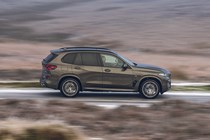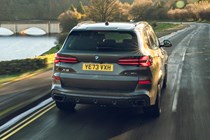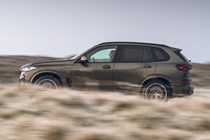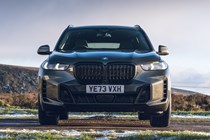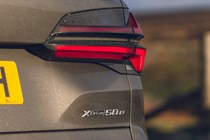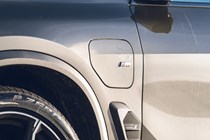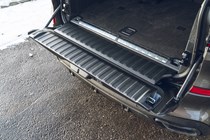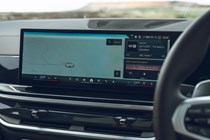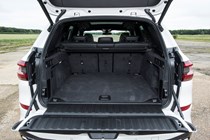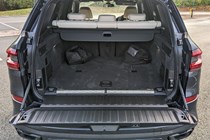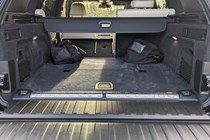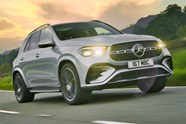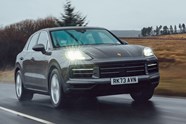
BMW X5 review
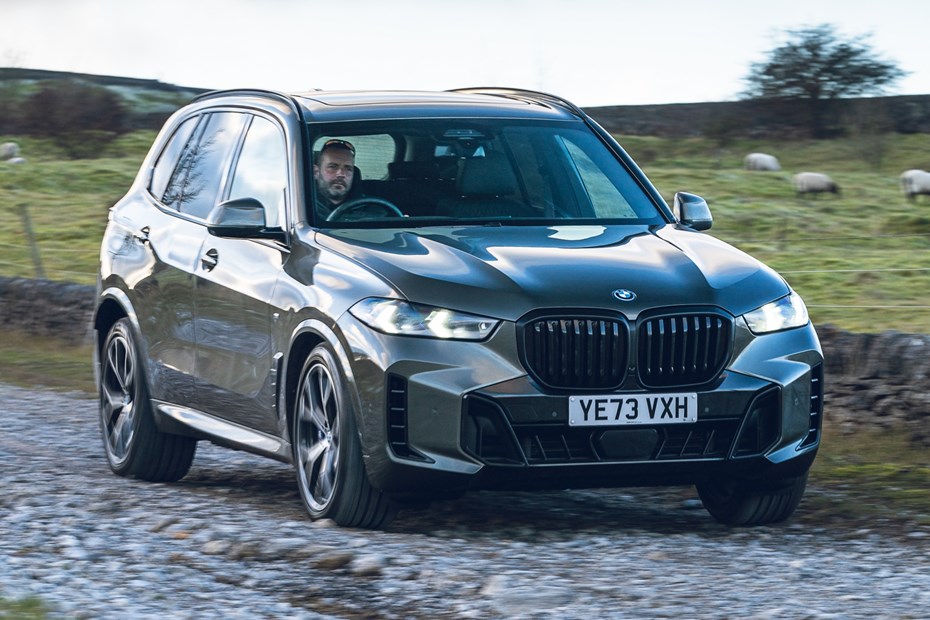
At a glance
| Price new | £74,560 - £116,805 |
|---|---|
| Used prices | £25,682 - £82,029 |
| Road tax cost | £620 |
| Insurance group | 43 - 50 |
Get an insurance quote with

|
|
| Fuel economy | 23.7 - 42.2 mpg |
| Range | 548 - 792 miles |
| Miles per pound | 3.5 - 5.4 |
| Number of doors | 5 |
| View full specs for a specific version | |
Available fuel types
Petrol
Diesel
Hybrid
Pros & cons
- Efficient plug-in hybrid
- Practical and plush interior
- Enjoyable to drive
- Reduced button count for heater and stereo
- Rear legroom could be better
- Seven-seater option of limited use
Overview
The original BMW X5 was one of the first big SUVs that drove like a car and not a piece of agricultural machinery. A lot of rivals have sprung up since the first examples rolled off the production line in 1999, but the X5 is still one of the finest full-sized SUVs money can buy.
This fourth-generation model was first launched in 2019 but benefitted from a major update in 2023. Competition from other great SUVs like the Audi Q7, Mercedes-Benz GLE, Range Rover Sport and Porsche Cayenne means the BMW has to work even harder to offer all things to all drivers. Even more so these days when cheaper cars such as the Volkswagen Touareg offer a similar set of skills for less cash.
BMW has moved with the times, making sure the X5’s engine options remain relevant. Mild hybrid tech is standard on all petrol and diesel options, and there’s a long range plug-in hybrid, too. That said, the smallest engine is a 3.0-litre straight six and the largest a 4.4-litre V8, with all engines turbocharged for good measure. Performance is unlikely to be an issue.
There are two basic trim choices but BMW says the majority of customers will ignore xLine – which is only available with the base 30d diesel – and pick M Sport for its more aggressive looks and improved kit list. There’s also the V8-powered M60i which is its own model. All versions come with a decent amount of equipment including an automatic gearbox, all-wheel drive, electric seats and an electric tailgate.
Inside, the X5 has adopted the latest BMW curved display that puts the infotainment and driver’s display under one big sheet of glass. There’s also a cleaner look with a reduced button count, while all versions get faux leather wrapping on the dashboard and doors to make it look even plusher.
We’ve tested the BMW X5 extensively over the years, including the popular plug-in hybrid version to see how far it can travel on electric power. Read more about how we test cars at Parkers.
Click through the next few pages to read everything you need to know about the BMW X5, including its practicality, how much it costs to run, what it’s like to drive – and most importantly whether we recommend buying one.



